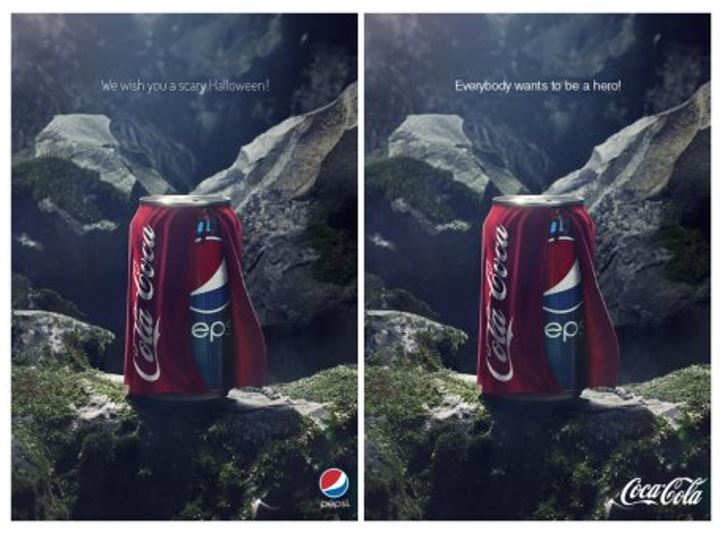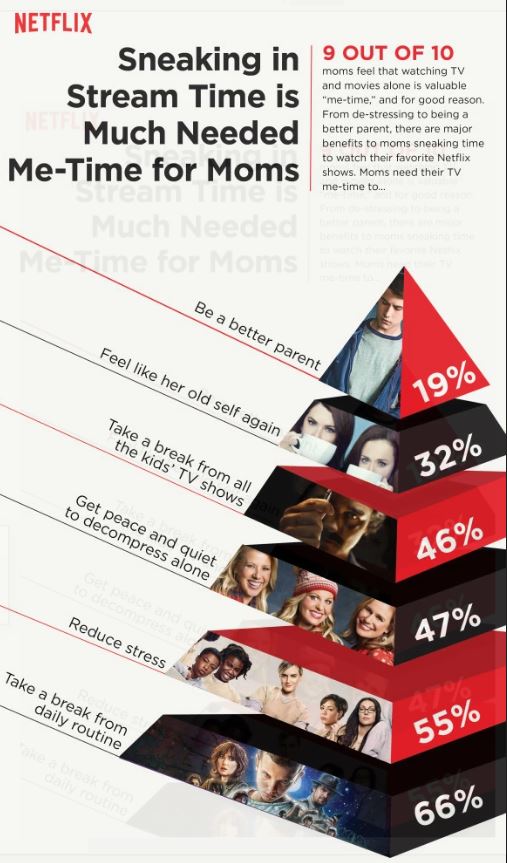Netflix Consumer Behavior
Netflix consumer behavior – This assignment focuses on a branded service – Netflix on the basis of co-creating value. Netflix is the leading American brand known for streaming services. In this case, Netflix is the brand and streaming is the service. Therefore, of focus in this assignment is developing a brand-image – various brand associations; brand-congruency by determining the level of congruency between the typical user’s image and brand-image.
The assignment also focuses on explaining the brand attitude of Netflix’s target audience, social-cultural influences, identifying any artefacts and rituals associated with the branded service, and the recommendation of the various ways of creating value for the customer. In general, this assignment is a piece communication, which provides the service brand (Netflix) manager with information about their socio-cultural, brand, and normative influences affecting and co-creating value for the target audience.
Brand Image
To begin with, it is hard to imagine a living room or boardroom where Netflix (branded service) requires an introduction. Currently, the branded service boasts of over 70 million subscribers across over 40 countries worldwide. Netflix has spurred hundreds of cable cancellations every day. This kind of growth for Netflix in recent years is partly attributed to the brand service’s image out there. According to Park & Lee (2005, p. 40), the success of a company stems, partly, from delighting customers in margin-enhancing, customers in hard to replicate ways, which ended up creating the kind of brand-image that is unique.
When it comes to Netflix’s brand-image, what comes to mind is authenticity and sustainability. The brand image has been built with the human spirit, and not necessarily ad campaigns (Pittman & Sheehan, 2015, p. 1). To the management, what comes to the mind of the consumer in reference to Netflix is that it provides streaming services, and the branded service is largely known for its positioning model. Park et al. (1991, p. 186) pointed out that the brand image is the unique story, which consumers recall when they think of a brand (PowerPoint Presentation Week 5, n.d. Slide. 26).
To the management, therefore, Netflix’s brand-image has points of parity, which are also the same as other brands in the same industry or different industry (Pittman & Sheehan, 2015, p. 1). These points of parity include innovation (also associated with the car brand – Tesla), reliability – also the case with Honda, and convenience (similar to Amazon). On the other hand, the points of difference for Netflix include the streaming TV shows, original content, and movies.
Brand Congruency
Brand congruency is made up of product brands and user-image. Brand congruency refers to a scenario where all the elements and touch points of the brand, in this case, Netflix, appears to have been cut from the same cloth. According to Stach (2015, p. 675), the brand congruence between the self-image of the consumers and the attempt of the brand image to explore consumer choices, for example, purchase intentions, preference of the brand, and usage and loyalty.
The degree of congruency between the brand image and typical user’s image is based on the brand evaluation, which relates to promotion message. In this case, Dolich (1969, p.5) pointed out that reminding consumers of their self-images, under the promotion message, there are positive considerations of brand congruencies given by the same consumers.
Accordingly, the degree of congruency between your self-image and the typical brand-user image is based on how the consumer uses the brand as a symbol; in this case, consumers consider brands with images or personalities, which are congruent with their self-image or brand personality (Stach, 2015, p. 674). In summary, the brand-image congruency involves self-schema, and it comprises of brand personality that is measured in terms of brand attitudes.
Brand Attitudes and Consumer Behavior
The brand attitude of the customer comprises of two main components – the strength of positive or negative relation/association, which the experiences of the customer towards a specific brand as well as the conviction of the accuracy of the brand (Gonzalez-Jimenez, 2017, p. 69). In this case, there are various brand attitudes towards the branded service – Netflix. For instance, Netflix consumer behavior has succeeded in creating a positive attitude towards its brand.
Here, the branded service has created the belief that it can either succeed or fail based on its ability to maintain and drive subscriptions (Malcolm-Boulton, 2016, par. 7). When it comes to emotions, Netflix comes with a feeling from the consumer that exhibit dynamism, excitement, and modern enthusiasm of subscriptions other than cable services.
Accordingly, Netflix services also trigger nostalgia as the branded service has managed to revive nostalgic shows such as the Gilmore Girls that is no longer available in cable services (Gonzalez-Jimenez, 2017, p. 68). Therefore, the brand attitudes directed to Netflix comes with excitement, curiosity, nostalgia, and a sense of control of specific shows to subscribe.
The Social-Cultural Influences
Netflix did not focus more on the sociocultural influences their services would have on individuals. In this case, Netflix’s social influences have led to the reduction of jobs; for example, Roettgers (2015, p. 1) observed that Netflix beat competitors operating retail outlets by embracing streaming services. There is the issue of identification influence where consumers have been influenced by Netflix because of its modernity, convenience, unique services, and the confidence it projects to the public (Wang, 2014, par. 16).
Identification influence, in the case of Netflix, is based on what Pittman & Sheehan (2015, p. 1) termed as “binge-watching.” “Binge-watching” is a representation of a radical shift from the 21st-century media consumption. This kind of influence comes with the unique services of the branded service, which means it can also be associated with Netflix’s normative influence.
As a result, because of the continued evolution of various manners of accessing the content of the program and the soaring dependency on various Internet devices, it is evident that Netflix’s normative influence has since been felt, and is evident in the “New Golden Age.” Additionally, Netflix consumer behavior has had a massive impact on the television viewership culture, which can be identified as a normative influence – social influence resulting in conformity (Merikivi et al., 2018, p. 113).
The branded service’s revolutionary recommendation system has also influenced how consumers conform to the norm and, in turn, has seen consumers shift to the company’s streaming services (Sheinin, 1998, p. 138). These influences have, in turn, result in various ethical considerations related to job opportunities and increased levels of unemployment that the branded service had to consider.
Rituals and Artefacts
There are rituals associated with the branded service – Netflix. One of the rituals is getting the Netflix subscription. There are steps to be followed in this ritual. First, it is important to identify the right devices that are compatible or support Netflix. These devices range from Apple TV, PS3, PS4, Android, Kindle, Xbox, and Microsoft Windows, among others. This is followed up by clicking the button – Start Your Free Month, followed up by creating the account which often requires a viable email address.
Once the password is created, it is important to choose your plan identified as Regular, Standard, and Premium plans (Roettgers, 2015, p. 1). These plans vary in quality and are followed up by entering your billing information and, thus, requires a credit card and billing information. It is also important to rate the sample selection, which involves selecting the film titles. This means using the Netflix DVD website for set-ups of specific orders. Once this ritual is done, you can watch the Netflix streaming services.

There are artefacts associated with the branded service. First, there is compression artefact, making up the error code, involves an adverse effect of image degradation where the complexity of the image exceeds the necessary rate of recording. This artefact is associated with the branded service and is known for impacting the asset’s technical quality. In this case, Netflix, Inc. (2018, p. 1) noted that the customer experience is impacted negatively by the degraded image.
As a result, further downstream compression can massively exacerbate artefacts, which are found in the source. Accordingly, there are the artefacts under severity structure, and one of them is the News-Review – a minor blocking or artefact found at the sub-block or back region (Netflix, Inc., 2018, p. 1). Secondly, there is the Needs Fix, which is a macro-blocking or minor artefact, and normally appears as visible parts of the image. Therefore, these artefacts have negatively impacted the customer’s experience and perception of Netflix and are one of the issues the branded service is aware of.
Conclusion
Of focus in this study has been the branded service – Netflix, and is based on co-creating value. In this case, the study has determined the brand image of the streaming services company to be established by the human spirit, and not an ad campaign.
There is also the issue of brand congruency and has been on the basis of the distinct differences between the consumers’ self-image and image of the brand attempt to determine consumer choices namely purchase intentions, brand preference, and usage and loyalty. Accordingly, there are issues of brand attitudes, the socio-cultural differences such as normative influences, as well as the artefacts and rituals. Artefacts include compression artefact, Needs Review, and Needs Fix.
Recommendations
Following the above key elements of value regarding the branded service, Netflix, the manager should co-create value by understanding the various customer attitudes towards the brand. In turn, the manager should work towards modelling the values of the branded services to suit the customer preference and expectations. Secondly, the manager can co-create value by putting in place a team that can reduce the number of artefacts to improve the customers’ perception (Merikivi et al., 2018, p. 114).
Accordingly, the manager can co-create value by establishing a quirky customer service, which will give the branded service an edge; should focus more on being customer-centric, which will allow the company to fix search, browsing, and level of discoverability, and allow DVDs to fix its content gaps (Park & Lee, 2005, p. 44). Lastly, the manager can co-create value by ensuring that it informs its customer beforehand of the upcoming shows and films for better preparation on the side of the customer.
Bibliography
Dolich, I. J. (1969). Congruence Relationships between Self Images and Product Brands. Journal of Marketing Research, 6,1, 80.
Gonzalez-Jimenez, H. (2017). The self-concept life cycle and brand perceptions: An interdisciplinary perspective. Ams Review: Official Publication of the Academy of Marketing Science, 7, 67-84.
Malcolm-Boulton, C. (2016). The good, the bad and the binging: How Netflix has impacted on modern society.
Merikivi, J., Salovaara, A., Mäntymäki, M., & Zhang, L. (2018). On the way to understanding binge watching behavior: the over-estimated role of involvement. Electronic Markets, 28,1, 111-122.
Netflix, Inc. (2018). Compression Artificing.
Park, C.W, Jaworski, B.J. & MacInnis D.J. (1986). Strategic Brand Concept-Image Management. Journal of Marketing, 50, 135-145.
Park, C. W., Milberg, S. & Lawson, R. (1991). Evaluation of Brand Extensions: The Role of Product Feature Similarity and Brand Concept Consistency. Journal of Consumer Research, 18, 185-193.
Park, S. & Lee, E. M. (2005). Congruence between Brand Personality and Self-Image, and the Mediating Roles of Satisfaction and Consumer-Brand Relationship on Brand Loyalty. In AP – Asia Pacific Advances in Consumer Research Volume 6, eds. Yong-Uon Ha and Youjae Yi, Duluth, MN: Association for Consumer Research, Pages: 39-45.
Pittman, M., & Sheehan, K. (2015). Sprinting a media marathon: Uses and gratifications of binge-watching television through Netflix consumer behavior. First Monday, 20, 10.
Sheinin, D.A (1998). Positioning Brand Extensions: Implications for Beliefs and Attitudes. Journal of Product and Brand Management, 7(2), 137-149.
Stach, J. (2015). A conceptual framework for the assessment of brand congruent sensory modalities. Journal of Brand Management, 22, 8, 673-694.
Wang, U. (2014). How the Netflix model impacts the environment, economy and society.
Relevant Netflix Consumer Behavior Posts
Behavioural Analysis and Implications of Netflix Investments
Marketing Situation Analysis for Netflix UK
If you enjoyed reading this post on Netflix Consumer Behavior, I would be very grateful if you could help spread this knowledge by emailing this post to a friend, or sharing it on Twitter or Facebook. Thank you.




